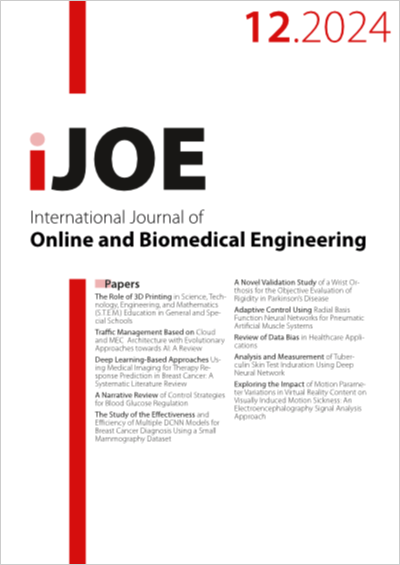Exploring the Impact of Motion Parameter Variations in Virtual Reality Content on Visually Induced Motion Sickness: An Electroencephalography Signal Analysis Approach
DOI:
https://doi.org/10.3991/ijoe.v20i12.49773Keywords:
Electroencephalography (EEG), Virtual reality (VR), visually induced motion sickness (VIMS), power spectral density (PSD)Abstract
The utilization of virtual reality (VR) technology has surged during the COVID-19 pandemic, leading to a diversification of its applications. However, one significant challenge associated with VR usage is visually induced motion sickness (VIMS). To address this issue, a study was conducted to investigate the impact of variations in physical motion parameters on VR content in relation to VIMS. The study employed electroencephalography (EEG) signal analysis to measure the level of VIMS experienced by users as the motion characteristics of the content became more intricate, potentially inducing circular vection sensations. The results revealed noteworthy changes in power spectral density values within the alpha and beta brain wave frequency ranges in specific brain areas, including the frontal, parietal, and central regions. Furthermore, an elevation in stress levels and cognitive load was observed through power ratio analysis. These findings, which have direct implications for the design and advancement of VR content, are crucial for establishing an evaluation system for VR technology, ultimately mitigating adverse effects on users.
Downloads
Published
How to Cite
Issue
Section
License
Copyright (c) 2024 Galih Restu Fardian Suwandi, Siti Nurul Khotimah, Freddy Haryanto, Suprijadi

This work is licensed under a Creative Commons Attribution 4.0 International License.



